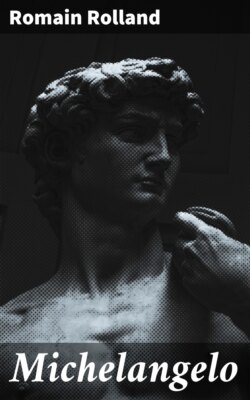Читать книгу Michelangelo - Romain Rolland - Страница 3
На сайте Литреса книга снята с продажи.
INTRODUCTION
ОглавлениеTable of Contents
The life of Michelangelo offers one of the most striking examples of the influence that a great man can have on his time. At the moment of his birth in the second half of the fifteenth century the serenity of Ghirlandajo and of Bramante illuminated Italian art. Florentine sculpture seemed about to languish away from an excess of grace in the delicate and meticulous art of Rossellino, Disiderio, Mino da Fiesole, Agostino di Duccio, Benedetto da Maiano and Andrea Sansovino. Michelangelo burst like a thunder-storm into the heavy, overcharged sky of Florence. This storm had undoubtedly been gathering for a long time in the extraordinary intellectual and emotional tension of Italy which was to cause the Savonarolist upheaval. Nothing like Michelangelo had ever appeared before. He passed like a whirlwind, and after he had passed the brilliant and sensual Florence of Lorenzo de' Medici and Botticelli, of Verocchio and Lionardo, was ended forever. All that harmonious living and dreaming, that spirit of analysis, that aristocratic and courtly poetry, the whole elegant and subtle art of the "Quattrocento," was swept away at one blow. Even after he had been gone for a long time, the world of art was still whirled along in the eddies of his wild spirit. Not the most remote corner was sheltered from the tempest; it drew in its wake all the arts together. Michelangelo captured painting, sculpture, architecture and poetry, all at once; he breathed into them the frenzy of his vigour and of his overwhelming idealism. No one understood him, yet all imitated him. Every one of his great works, the David, the cartoon for the war against Pisa, the vault of the Sistine Chapel, the Last Judgment, St. Peter's, dominated generations of artists and enslaved them. From every one of these creations radiated despotic power, a power that came above all from Michelangelo's personality and from that tremendous life which covered almost a century.
No one work can be detached from that life and studied separately. They are all fragments of one monument, and the mistake that most historians make is to mutilate this genius by dividing it into different pieces. We must try to follow the entire course of the torrent from its beginning to its end if we are to have any comprehension of its formidable unity.
